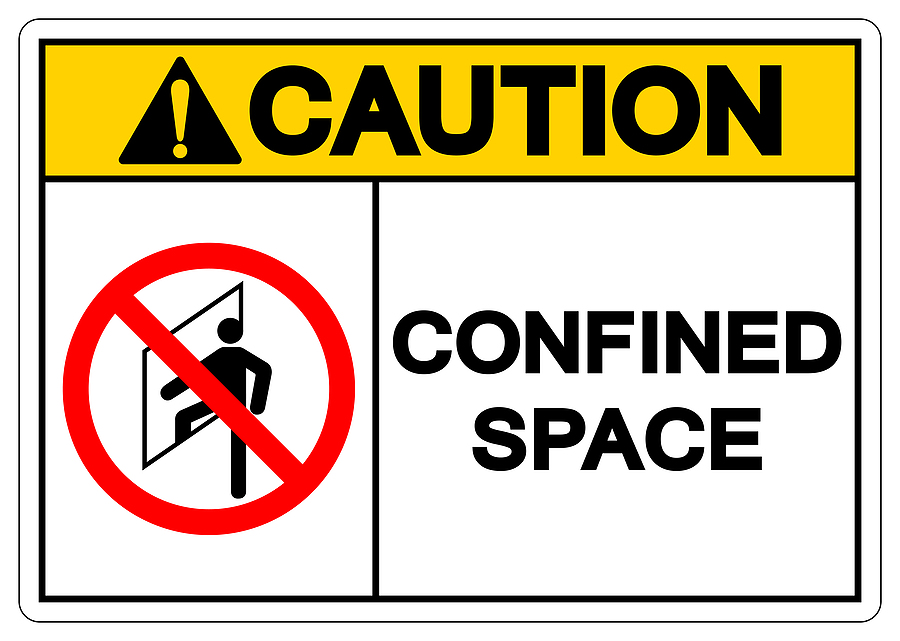Confined Space Worker Best Safety Practices

Occupational hazardous such as working in confined spaces are unique and can be life threatening. Confined spaces including tanks, vaults, manholes, pipes, silos and tunnels are typically characterized by limited means for entry and exit; poor air flow; potential hazardous atmospheres.
Best practices that aim to prevent workplace injury and death are critical for worker safety. Here are some of the top safety practices for workers in confined spaces.
#1 Perform Comprehensive Risk Assessments before Entering
Before entering a confined space, it is necessary to carry out a rigorous risk assessment by the workers. All atmospheric hazards (toxic gases or oxygen deficiency), physical hazards (for example, engulfment or entrapment) and structural hazards should be identified and assessed in this assessment.
Test for oxygen, toxic gases, flammables and other hazardous atmospheres with gas monitors. Regular assessments allow you to know that all risks are accounted for and the necessary mitigation measures are in place.
#2 Adopt a Permit-to-Work System
Central to confined space safety, is a permit-to-work system.
It creates a disciplined and methodical procedure for permitting access to restricted areas, detailing who is permitted to enter, the type of work to be conducted, existing hazards, control methods and rescue arrangements. Each worker must know about the permit requirement and get proper permission with adequate rules.
#3 Use The Right Safety Equipment
Proper PPE should be provided to workers for confined space entry. This might include respiratory equipment, protective clothing, helmets, gloves, safety belts and retrieval systems.
More training on the proper use, inspection, and maintenance of this equipment is necessary. For instance, proper wearing of restraints and retrieval lines are required, as well as the correct calibration of gas monitors in order to ascertain that they give the right readings.
#4 Monitoring Air Quality
There are fixed and portable options available that monitor ambient air and continuously let the people working in confined spaces know if there are any atmospheric hazards present, as conditions can quickly change inside a confined space.
Use fixed and portable gas monitors to measure oxygen, toxic gases, flammable vapors. If unsafe levels are detected, workers must exit the space immediately. It offer opportunity for monitoring health and safety of workers in real time based on data collected, during which timely actions can be taken to ensure worker health and safety.
#5 Establish and Train on Emergency Response Plans
A properly developed emergency response plan is critical because confined space emergencies can grow quickly. This plan should include rescue plans, communication protocols, emergency contacts and the availability of emergency equipment.
Workers, attendants and rescue teams should be regularly trained and rehearse the rescue scenarios so that they are familiar in actual emergencies.
#6 Hire a Qualified Attendant to Wait Outside the Space
Somebody must be outside the restricted area whilst entry is needed. The attendant monitors conditions and keeps in touch with workers inside, initiating emergency procedures as needed.
All attendants should never abandon their position if workers are inside and have the right to order an evacuation when conditions become unsafe.
#7 Maintain Clear Communication
Communication among workers inside the confined space, attendants outside and others involved in the work is an essential feature of a safe system.
Contact with workers should not be further up the ladder to radio, hand signals or a communication line. Good and uniform communication means that even small hazards must be reported right away, help could be called for without delay.
#8 Limit the Number of Personnel
To limit the risk of incidents: Ensure that no additional persons enter a confined space (only essential personnel entering a CP).
This type of situation only has the potential to lead to injury, complication or worse as more workers enter in a tight space. Limiting access reduces risk, helps to ensure a better account of all pupils and will allow an effective emergency response should it be needed.
#9 Offer Extensive Training
The workers involved in confined space work should be skilled in recognizing hazards, entering and exiting safely from the area, responding to an emergency as well use of safety equipment.
It is important to set up regular refresher courses for employees so that everyone knows the latest safety practices and regulations.
#10 Implement Lockout/Tagout Procedures
Implement lockout/tagout (LOTO) to prevent unplanned machine startup when you are working in or around machinery or energy sources. They prevent entrapment, crush injuries and other hazards during confined space work.
Final Thoughts
Working in confined spaces demands a need for safety — literally and figuratively. Combined with comprehensive inspections, permits when necessary, appropriate equipment use, ongoing monitoring and open lines of communication, workers and employers can work towards a safer workplace.
Providing thorough training and emergency preparedness even more reinforces the readiness of workers to deal with any risks that arise. Following these practices can drastically reduce risks in these areas, and save lives.
